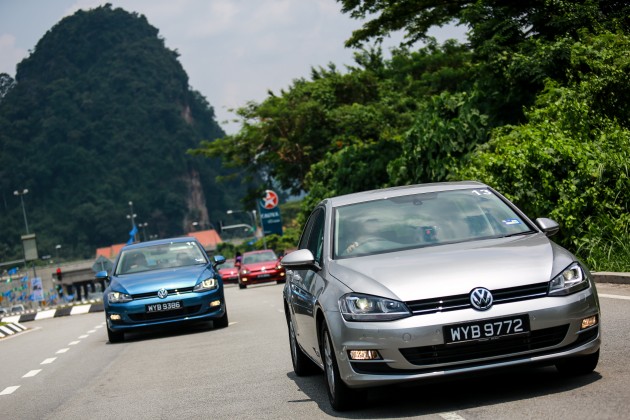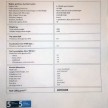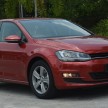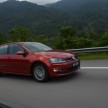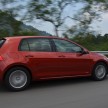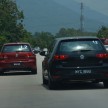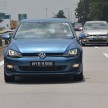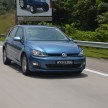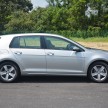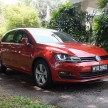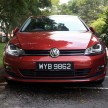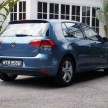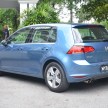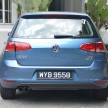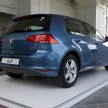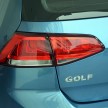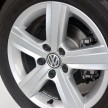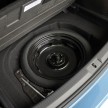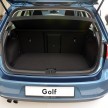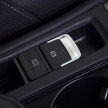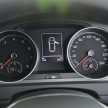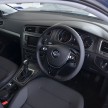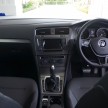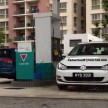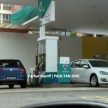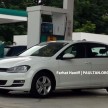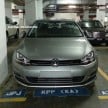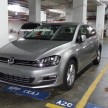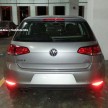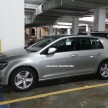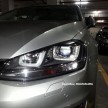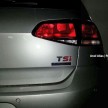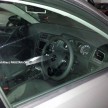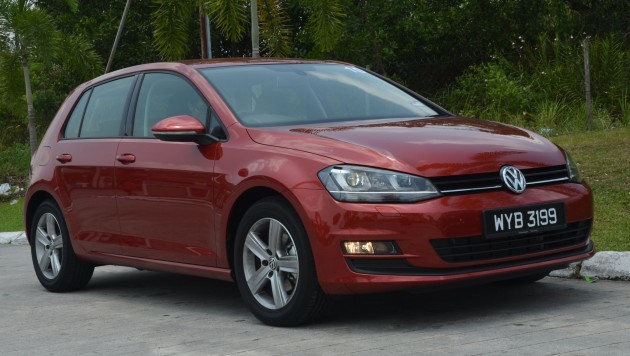
Articles related to the new Volkswagen Golf Mk7 have been coming in thick and fast in the past few days. From local spyshots to a mega gallery of the preview party, there’s no shortage of information on Volkswagen’s latest model. Add to that our test drive report from the Golf Mk7 international press drive in Sardinia, and the only vital matter left uncovered is the official pricing and specs.
That last piece of the puzzle has just been announced – the Volkswagen Golf Mk7 1.4 TSI is priced at RM157,888, without insurance. That’s the same price as the outgoing car in its model-runout SE guise. As we’ll find out in this article, there’s a lot more car on offer here for the same price, with a more comprehensive standard equipment list and improved efficiency.
There’s no question that the Golf Mk7 is a much bigger step forward compared to the incremental improvements from Mk5 to Mk6, as seen from the introduction of entirely new architecture and engine. This is definitely not a mere facelift.
Starting on the local specifications, the Golf Mk7 is available in a single 1.4 TSI guise, and only a seven-speed dual-clutch DSG gearbox is offered – no surprises there. Also standard is the handling-enhancing XDS transverse differential lock, previously only available on the GTI model.
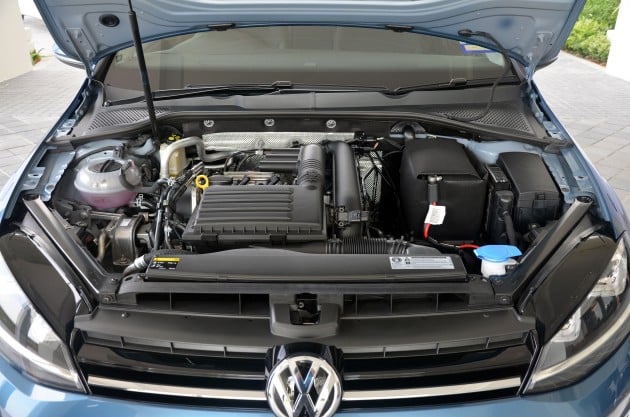
The petrol engine is all-new, not to be confused with the outgoing EA111 TwinCharger mill. Part of the latest EA211 engine family, it drops the low-rev supercharger found on the old motor, relying on a single turbocharger to give the small engine a big output.
Losing the supercharger sees the maximum power drop from 160 to 140 PS, which is developed at 4,500 to 6,000 rpm. It’s not all bad news, as torque sees a welcome 10 Nm bump to 250 Nm through 1,500 to 3,500 rpm. The 0-100 km/h sprint now takes 8.4 seconds, 0.4 sec slower than before, while top speed has dropped from 220 to 212 km/h.
Not exactly slow, then, just slightly slower than the car it replaces, which is never an ideal situation. Volkswagen, however, argues that the benefits to be had on the efficiency front are significant enough to outweigh the performance drop. Well, that is for the customers, those who will have to refuel their car week in and week out, to judge.
The new engine and structure weighs 35 kg less than before, as part of the Golf Mk7’s 80 kg diet. It’s now badged as a BlueMotion unit and is equipped with an idle Stop/Start system as standard. With less weight comes great efficiency, as the new Golf 1.4 TSI certainly proves.
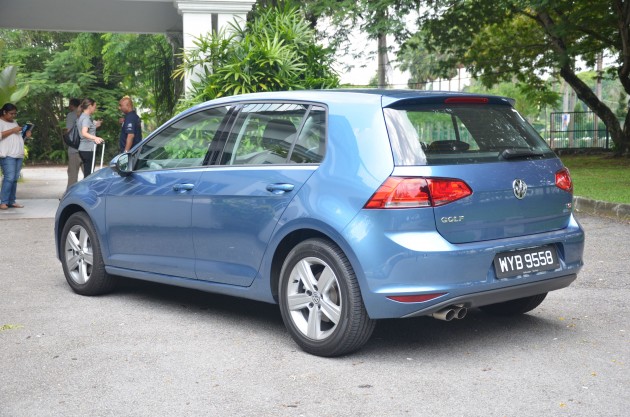
The Mk6’s combined figure of 16.7 km per litre was considered by many to be outstanding, especially given the performance on offer. Now, with marginally less speed, the new Golf 1.4 TSI returns 20.0 km per litre, a solid improvement of 20%.
Is it a worthy trade-off? It’s not 20% slower, that’s for sure, and we have the suspicions that most prospective owners will hardly feel the slight drop in performance – it’s more than fast enough anyway – but the significantly lower running cost will not go unnoticed.
As speculated, Active Cylinder Technology (ACT) has been omitted from the local Golfs. Such fitted, the combined fuel consumption figure would improve further to 21.3 km per litre but more importantly, its CO2 emission would drop from 116 to 110 grams per km.
Small difference, yes, but just big enough to push the ACT-equipped model into Germany’s top-band Efficiency Class for substantial tax benefits. There’s no such perks available in Malaysia and, with little to gain mileage-wise, it’s deemed unnecessary for our local cars. Fair enough. Our low-grade fuel has also been cited as one of the reasons why ACT is not offered here.
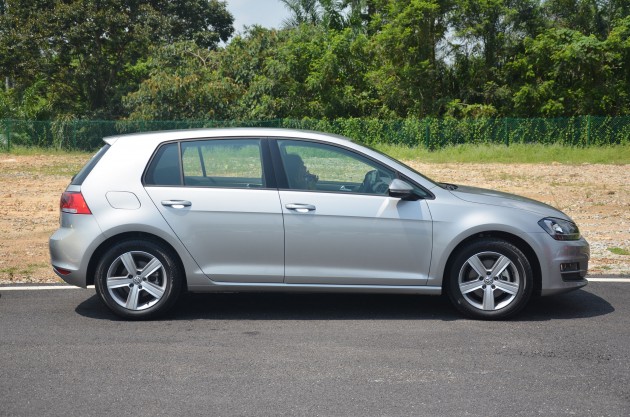
Dimensionally, the new car is 56 mm longer, 13 mm wider, 28 mm lower with a 59 mm longer wheelbase. The ultra-modern Modular Transverse Matrix (MQB) platform is all new, replacing the ageing one shared by the Golf Mk5 and Mk6.
Interior space is now 14 mm longer than before, benefiting passengers in the rear seats the most. There’s now 15 mm more legroom in the back, while shoulder and elbow room have been increased by 30 and 20 mm respectively.
Cargo capacity has grown by 30 litres to 380 litres, making good use of the variable cargo floor that can be lowered by 100 mm. Maximum boot width has increased by a massive 228 mm, now 1,272 mm. The load sill is 17 mm lower and 47 wider too, for easier access.
Much has been said of the car’s exterior, so we’ll not elaborate further. The ‘U’ shaped LED daytime running lights – now of the ‘lightbar’ type rather than having individually housed diodes – is now a standard feature. Bi-xenon lights with active bending function is also present.
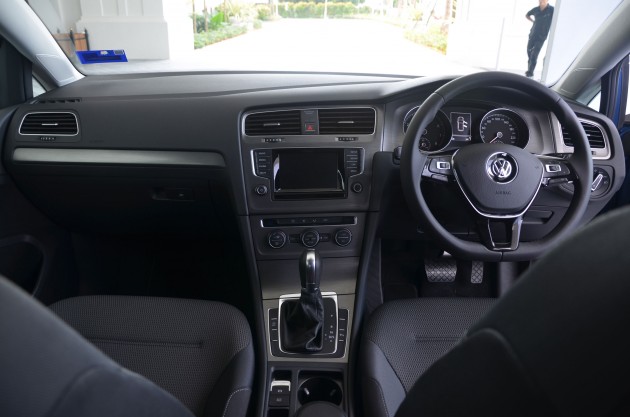
Round the back, standard bulb rear lights are used – darkened LED units are to be introduced on the costlier GTI variant and may be offered as an optional extra on the TSI in the future.
The wheels are ‘Dover’ 16-inch items with 205/55 R16 tyres, sitting on a track that has been widened by eight millimetres at the front and six millimetres at the rear compared to the old Golf. Standard fit tyres are low-rolling resistance Bridgestone Turanza ER300s.
Moving inside, the driver-oriented dashboard gets a 5.8-inch “Composition Media” colour touchscreen equipped with a proximity sensor. It has swipe and pinch functions, just like smartphones do, and has Bluetooth, USB, AUX-in and SD card connectivity as standard.
The driver’s seat and steering wheel now have a wider adjustment range, while the new MQB superstructure allows for a more spacious foot well. Cabin ergonomics have been improved throughout as well.
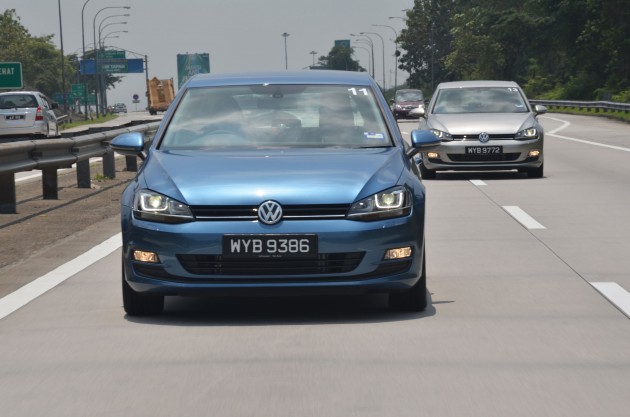
A not so welcome addition is the electronic parking brake, replacing the space-hungry traditional handbrake. There’s an Auto Hold function too, so there’s no need to constantly finger the tiny button during hill starts.
Finishing off, there’s the usual bevy of safety equipment – seven airbags in total (including a knee airbag for the driver), ESC, front and rear ParkAssist (proximity sensors, not auto park) and a new Multi Collision Brake feature that applies the brakes to prevent or mitigate a subsequent impact when the vehicle has been involved in a collision. It has also been certified with a Euro NCAP five-star safety rating, if anyone is counting.
For driver convenience, there are auto headlights and a basic cruise control (not Adaptive Cruise Control). Unfortunately Volkswagen’s excellent Dynamic Chassis Control (DCC) is not specified, joining the sunroof and satellite navigation in the missing-features-in-local-cars list. A five-year warranty with unlimited mileage and five-year mobility guarantee are offered.
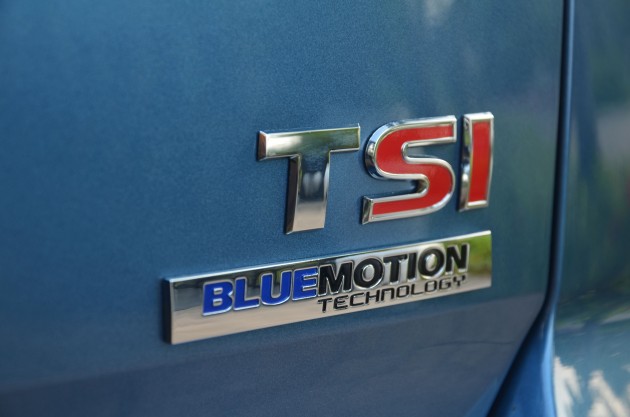
So there you have it. The new Volkswagen Golf Mk7 1.4 TSI is a bigger, lighter, more economical and better handling, if slightly slower car sold for the same money as the model it replaces. Everything considered, is it a better proposition than the outgoing Golf Mk6? Voice your opinions below.
Also, we have driven ‘The Car’ to Penang – our report on the Mk7 Golf’s performance on Malaysian tarmac will be coming very soon. For now, you can read our international press drive review and browse through our 110-photo gallery from yesterday’s preview party to have a closer look at the Malaysian-spec Golf Mk7, which officially goes on sale from this Saturday, March 16.
UPDATE: Our local test drive review of the Volkswagen Golf Mk7 1.4 TSI is now online. Read how the Malaysian-spec car behaves on our roads here.

